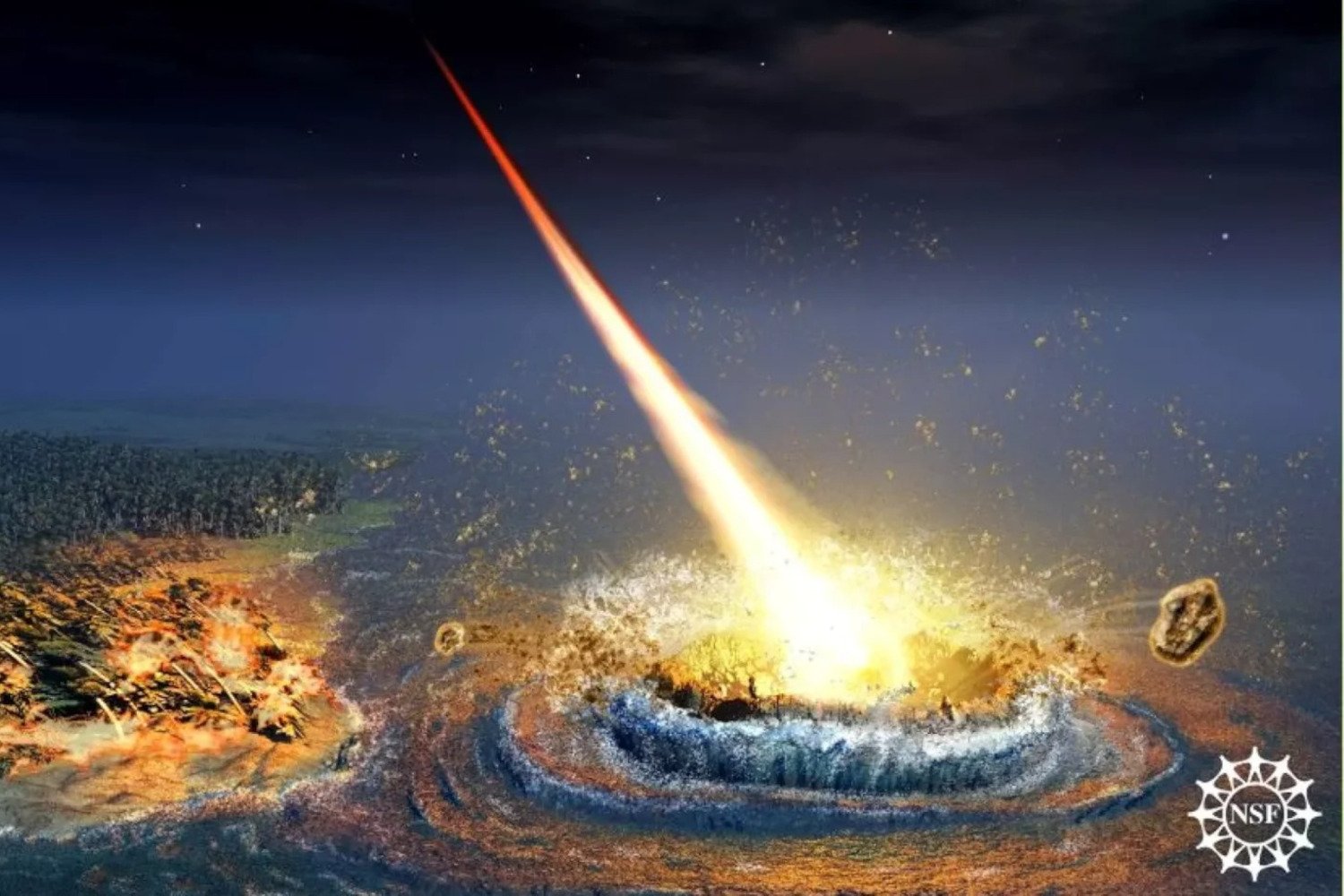Science
Ancient Asteroid Impact Reveals New Evidence of Tsunami in North Carolina

A team of geologists has uncovered significant evidence of a catastrophic asteroid impact and the subsequent tsunami that occurred approximately 35 million years ago. The asteroid, traveling at around 40,000 miles per hour (64,373 kilometers per hour), struck the Atlantic Ocean near present-day Cape Charles, Virginia. The impact created a large crater that lies buried half a mile beneath Chesapeake Bay, one of the largest and best-preserved impact sites on Earth.
This recent discovery, detailed in a study published in the journal Southeastern Geology, highlights findings from Moore County, North Carolina, located 240 miles (386 kilometers) south of the Virginia crater. Researchers identified distinct layers of rock formed by the impact and subsequent tsunami, shedding light on the far-reaching effects of this ancient event.
Geological Findings in North Carolina
The geological team examined a one-yard-thick layer formation and identified four distinct beds of rock. The first bed is approximately 17 inches (43 centimeters) thick and contains sandy clay rich in carbon glass and rock fragments. Notably, this layer registers between 14 to 18 parts per billion of iridium, a rare element commonly associated with meteorite impacts.
The second bed measures about 3 inches (9 centimeters) thick, consisting of silt and loosely bound masses of quartz and carbon, with 2 to 6 parts per billion of iridium. The third bed, around 2 inches (6 centimeters) thick, includes a mix of soil and seafloor fragments. Finally, the fourth bed, approximately 6 inches (15 centimeters) of coarse sand, is believed to have been deposited by the tsunami.
The uniqueness of these rock formations initially puzzled researchers. However, the geological evidence suggests a direct link to the ancient asteroid impact, underscoring the extensive destruction it caused.
Impact and Tsunami Analysis
When the asteroid struck, it generated a hypersonic shock wave that devastated flora and fauna over hundreds of miles. This event also released significant amounts of molten debris over a wide area, stretching from Massachusetts to Barbados. While scientists had long speculated that the impact resulted in a massive tsunami, concrete evidence had been lacking until now.
The findings in North Carolina provide a clearer picture of the tsunami’s aftermath. The first rock bed represents the initial impact, filled with ejecta and carbon-rich debris. The second bed captures the finer particles expelled as the shock plume began to dissipate. The third bed marks the inland surge of seawater mixed with sediment, while the fourth bed illustrates how clean sand and gravel filled the channel as waters receded.
This research significantly enhances our understanding of the Chesapeake Bay impact and its consequences. The evidence indicates that a single asteroid collision millions of years ago dramatically reshaped the region, leaving a lasting geological legacy. The study invites further exploration into the ancient events that have shaped our planet’s history.
-

 Technology5 months ago
Technology5 months agoDiscover the Top 10 Calorie Counting Apps of 2025
-

 Health3 months ago
Health3 months agoBella Hadid Shares Health Update After Treatment for Lyme Disease
-

 Health3 months ago
Health3 months agoErin Bates Shares Recovery Update Following Sepsis Complications
-

 Technology4 months ago
Technology4 months agoDiscover How to Reverse Image Search Using ChatGPT Effortlessly
-

 Technology1 month ago
Technology1 month agoDiscover 2025’s Top GPUs for Exceptional 4K Gaming Performance
-

 Technology3 months ago
Technology3 months agoElectric Moto Influencer Surronster Arrested in Tijuana
-

 Technology5 months ago
Technology5 months agoMeta Initiates $60B AI Data Center Expansion, Starting in Ohio
-

 Technology5 months ago
Technology5 months agoRecovering a Suspended TikTok Account: A Step-by-Step Guide
-

 Health5 months ago
Health5 months agoTested: Rab Firewall Mountain Jacket Survives Harsh Conditions
-

 Lifestyle5 months ago
Lifestyle5 months agoBelton Family Reunites After Daughter Survives Hill Country Floods
-

 Health3 months ago
Health3 months agoAnalysts Project Stronger Growth for Apple’s iPhone 17 Lineup
-

 Technology4 months ago
Technology4 months agoHarmonic Launches AI Chatbot App to Transform Mathematical Reasoning





















